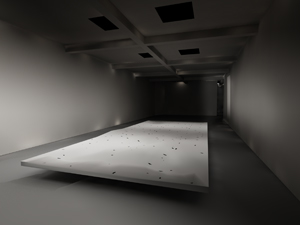Introduction to Visual Exploration
For this unit I am creating an online blog that I will update week to week, outlining what I have learnt from each lecture and seminar. The aim of this blog is to act along side the essay, showing all of my research, development of my ideas and to show the resources that I have looked at to help me with this unit.
Seminar on Blogging
In our first seminar we had a blogging workshop with Dominique Renault and Nick Papaconstantinou. They taught us how to create a successful blog. The main points I learnt from this seminar were:
- Make sure your blog is suitable for your audience.
- Use basic fonts (of a suitable size and colour) so that the text is easily readable.
- The content of a blog is always the most important aspect - never let the background become more overpowering than what you are writing.
- Make sure the blog is always relevant to the project (and make sure it is always engaging for the reader!)
In the lecture, we were shown a range of different blogs. Here are a few examples with my opinions:
Firstly, I looked at a popular blog called "Lenscratch". I really enjoyed looking at this particular blog because it shows a lot more images than other blogs that I have looked at. It gives a wide range of information but always backs it up with a large variety of images, which engages the reader and makes them want to read more. Even though the background is dull, I think it works really well as it does not draw any attention away from the images.
Secondly, I looked at a blog called "Little Brown Mushroom Blog", by Alec Soth. I liked the way the blog used a lot of images, however, I did not like the plain background and simple text. I would like my blog to have a bit more excitement to it. Although the contents of the blog was really interesting, I think that the layout and lack of colour scheme lets it down.
Lastly, I have looked at a blog called "A Photo Editor" which is almost set out like a newspaper. I like the way that this blog is laid out; with images in the main part of the blog, along with quotes down the side of the page. I also like the fact that the quotes at the edge really stand out because of the big, bold writing. All of the images are of a good size and quality which really draws the eye to each individual image.

Discussion on the work of John Berger
For our first set of reading, we were given a chapter of the book Ways of Seeing by John Berger. This specific chapter was filled with only images and no text.
a page from the chapter
I believe that Berger has chosen to look only at images so that the viewer can make their own opinion on the story/meaning. For example, in many books, the text often forces the reader into some sort or opinion, whereas with images alone, we can create our own unique outlook on the images.
I found this particular chapter really interesting to look at because of the way Berger has made it up of images alone. I think that this may be an avenue that I would like to look at in future projects. I think it really shows quite how much we, as readers, rely on text. Text in books or next to images gives the reader something to fall back onto, whereas Berger is forcing the reader to find their own interpretation.












